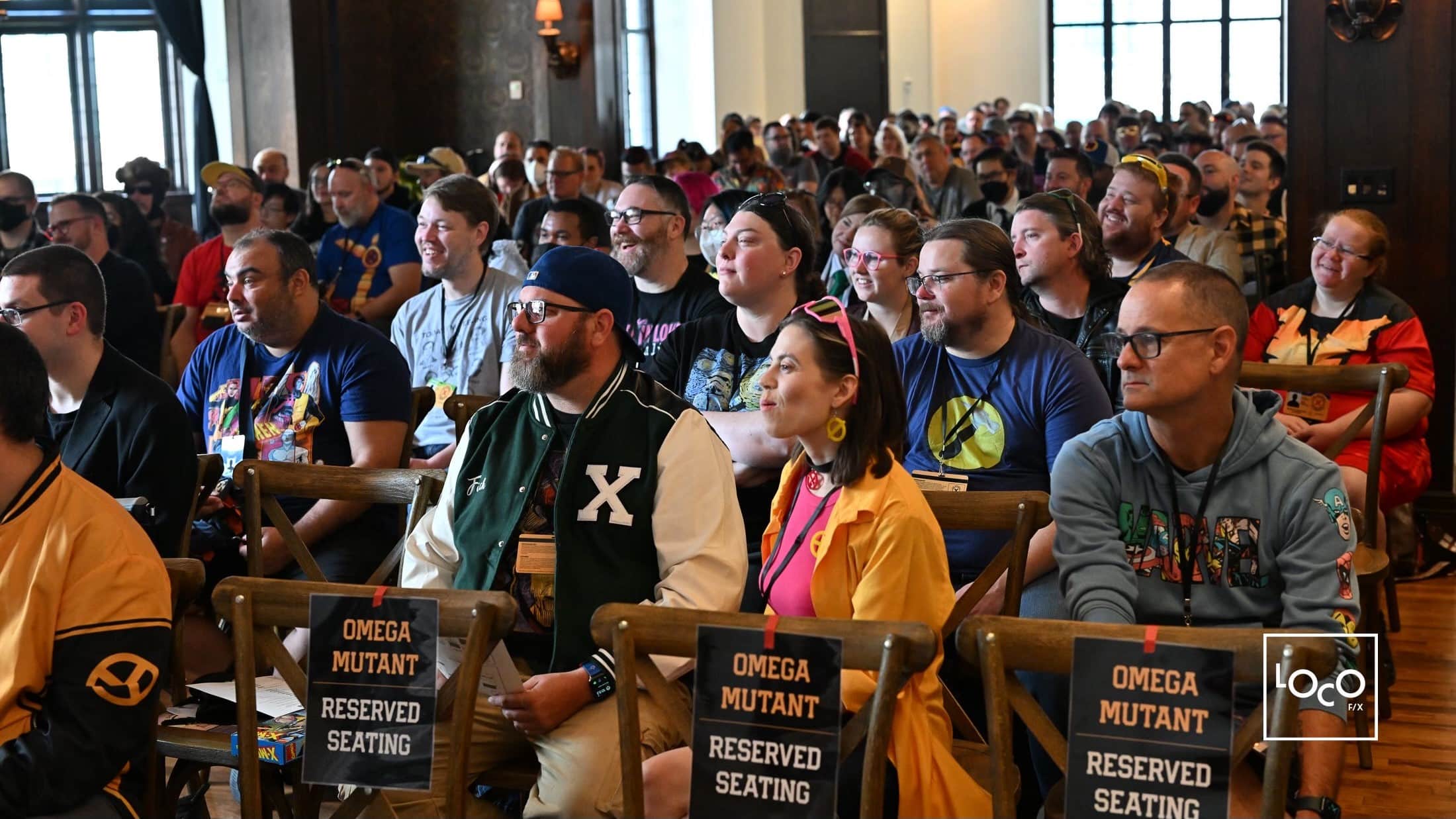It’s 2021, and the question on every comic reader’s mind is, “What is Black Hammer, and how do I get into it?”
Well, maybe not every comic reader, but with three miniseries currently being published, an anthology series coming next week and three new series announced recently, the world of Black Hammer might seem a touch perplexing or even overwhelming for someone new to it.
Well, fret no more, dear reader! I’ve compiled a handy reading guide that will take you through what’s essential, what it’s all about and how you can find it all.
Black Hammer started in 2016 as a comic series from Jeff Lemire and Dean Ormston, published by Dark Horse. The series became a huge success and soon branched out into myriad spin-offs and is now a fledgling comics universe of its own, largely, but not exclusively, written by Lemire.
Black Hammer/Black Hammer: Age of Doom (The Farm Story)

The main story, as you’re reading this, is finished! It’s known colloquially as The Farm Story and is told in Black Hammer #1-13 plus an annual and Black Hammer: Age of Doom #1-12 (in true cape comics fashion, there was a rebrand with a new #1 halfway through). As the story opens, a team of superheroes has been trapped in an alternate, superhero-less universe for 10 years.
Their leader is Abraham Slam, a Golden Age boxer turned vigilante who has tried to make the most of their new life on the farm. Golden Gail, a spin on Captain Marvel (the Shazam! one), is a middle-aged woman trapped in the body of a superpowered 9-year-old. She’s forced to go to school year after year, despite being an adult who likes cigarettes and booze and who is invincible and can fly. Mark Markz, Barbalien, is a Martian Manhunter analogue who, despite being able to change his shape, can’t adapt himself to a closeted small-town life. Colonel Weird is an Adam Strange-style space explorer who phases in and out of the story and seems to be unstuck in time, Billy Pilgrim-style. Finally, the last member of the team is Madame Dragonfly, a sorceress who lives in her own magical home, separated from the rest of the team, and may have a secret or two, as all good magical folk do. Oh, and then there’s the lost member of the team, the eponymous Black Hammer, whose story we learn only through flashbacks.
The Farm Story is excellent, with main art duties handled by Ormston with Dave Stewart on colors and a murderer’s row of guest artists (including David Rubín, Emi Lenox, Mike Allred, Dustin Nguyen and Rich Tommaso). The best way to read this story is the huge Library Edition collections, Vols. 1 and 2. Puzzlingly, the paperback collections omit Black Hammer #12 and the Giant-Size Annual (#12 gets collected elsewhere in the Sherlock Frankenstein and the Legion of Evil paperback and the Annual in the Black Hammer: Streets of Spiral trade).
Taken as a whole, The Farm Story is complete unto itself and provides a satisfying, self-contained story, but you get the impression before you reach the end of the first volume that Lemire fell in love with exploring his new superhero universe. During the hiatus between Black Hammer and Black Hammer: Age of Doom, Lemire and Rubín launched the first spin-off series, Sherlock Frankenstein and the Legion of Evil.
Sherlock Frankenstein and the Legion of Evil

Sherlock Frankenstein follows Lucy Weber, a journalist and the daughter of Black Hammer, as she investigates the disappearance of her father and the other heroes of Spiral City. Since the heroes have disappeared, Lucy turns to the villains of the city to uncover the mystery of why their heroes all disappeared that fateful day 10 years prior.
As the first miniseries to come out of Black Hammer, this one is perhaps the most tied in with the ongoing series and should be read between Black Hammer and Age of Doom. It’s collected in its own trade paperback, as well as in the World of Black Hammer Library Edition Vol. 1.
Doctor Andromeda and the Kingdom of Lost Tomorrows

Doctor Star (Excuse me, Doctor Andromeda, as it’s been renamed post-publication after a legal dispute over its original name) is the first almost entirely separate story from The Farm Story. The eponymous Doctor Star Andromeda shows up briefly in the main Black Hammer series, but here we learn his full, tragic story.
With a heavy dose of Green Lantern and James Robinson’s Starman (to the point where Doctor Andromeda’s alter ego is literally named James Robinson) and stunning art by Max Fiumara, The Kingdom of Lost Tomorrows begins as a Golden Age science fiction comic and ends in utter, devastating heartbreak. The characters are only tangentially related to the main Black Hammer plot, but this is a definite must-read. It’s collected in its own trade as well as in the World of Black Hammer Library Edition alongside Sherlock Frankenstein.
Quantum Age: From the World of Black Hammer

Set 1,000 years after The Farm Story, Quantum Age takes place in a dystopian society where a Legion of Super-Heroes style team of legacy heroes attempts to overthrow an authoritarian government, taking inspiration from the heroes of their past.
This miniseries is one of the more skippable of the Black Hammer tie-ins. It was published alongside Age of Doom, and can be read alongside it or after it. Still, it’s hard to argue with Wilfredo Torres’ exquisite line work (Mighty fine, indeed!). Quantum Age has been collected in its own trade paperback, but next week sees the release of World of Black Hammer Library Edition Vol. 2, which collects Quantum Age and Black Hammer ’45.
Cthu-Louise

This one-shot, featuring art by Emi Lenox, tells a story of teenage angst, bullying and just trying to get by as a kid with the head of an Ancient and Unspeakable Old God. While I may seem flippant describing it, Cthu-Louise is actually a pretty heartfelt one-shot. You can read it at any point, and it’s collected in the Black Hammer Library Edition Vol. 2 collection as well as in the Streets of Spiral trade paperback.
Black Hammer ’45

Lemire steps away from full writing duties for the first time (taking only a story credit), with Ray Fawkes stepping in to tell this World War II-but-with-superheroes-and-gods story alongside artist Matt Kindt. We follow the exploits of the Black Hammer squadron, an elite, all-POC group of pilots modeled on the Tuskegee Airmen. As with all Black Hammer stories, Black Hammer ’45 delivers a ton of action, but from a well of deep emotion. Collected in the Black Hammer ’45 trade paperback and next week’s World of Black Hammer Library Edition Vol. 2.
The World of Black Hammer Encyclopedia

Less a comic than a sourcebook, the Black Hammer Encyclopedia, written by Tate Brombal with Lemire and a slew of top-tier artists, contains a ton of gorgeous art and mini biographies of all of the major and many of the minor figures of the Black Hammer universe. It also contains hints about future Black Hammer stories. Because after all, it’s not really a comics universe without a sourcebook, right? Collected in the Streets of Spiral City trade and the Black Hammer Library Edition Vol. 2.
Black Hammer/Justice League: Hammer of Justice!

Lemire and Michael Walsh return to the farm to tell an untold tale of the time the heroes of Spiral City and the Justice League switched places. It’s fun but doesn’t have the emotional resonance of the rest of the Black Hammer stories. It was published well after the end of Age of Doom, but I’d say it could be read anytime after Black Hammer (the original series) #1-13. For more on Black Hammer/Justice League, check out this recent episode of Chrises on Infinite Earths.
Skulldigger and Skeleton Boy

Remember the ’90s? Or at least ’90s comics? In Skulldigger and Skeleton Boy, Lemire and artist Tonci Zonjic tell a story about an orphaned child who gets adopted/rescued/kidnapped by the vigilante Skulldigger and trained to become his sidekick. With elements of Punisher (and all of his ’90s clones) and Batman and Robin (and how messed up that whole situation is), this comic explores trauma, child abuse and vigilante justice. As it’s completely separate from The Farm Story, this miniseries can be read at any point. COVID-19 has delayed completion of this comic until February of this year.
Colonel Weird: Cosmagog

[Stefon voice] This comic has everything: bleak farmland vistas, cosmic adventure, all-gouache painted art from Tyler Crook. In all seriousness, this solo mini explores the fractured life of Col. Randall Weird as he drifts through moments of his childhood, his adventures as a space explorer and his confused state as an elderly spaceman unstuck in time. Since Colonel Weird experiences his life nonlinearly, it’s probably safest to read this one after completing The Farm Story. It’s scheduled to finish this month.
Barbalien: Red Planet

Brombal takes on lead writing duties (Lemire shares a story credit) and teams up with artist Gabriel Hernández Walta in this story set during the 1980s AIDS crisis. Mark Markz tries to reconcile his various identities as a gay man, a police officer and the shapechanging Martian superhero Barbalien. We’re only two issues in at this point, but so far it’s safe to read at any point after Black Hammer #3, but maybe leave this one until you’ve finished The Farm Story entirely.
So What Does the Future Hold For Black Hammer?

Black Hammer: Visions, an eight-issue anthology opening up the world of Black Hammer to new writers and artists, starts Feb. 10. The first issue is by Patton Oswalt, Dean Kotz and Jason Wordie.
And hot off the presses, Lemire has just announced Black Hammer Reborn, which will be the new ongoing core series, launching this spring or summer. Lemire didn’t announce an artist on this series but did announce a new Madame Dragonfly series later this year with Ormston, implying this will be the first core Black Hammer title not drawn by Ormston. He also announced a new miniseries with Crook, saying only that it will deal with the magical side of the Black Hammer Universe, alongside Madame Dragonfly and Black Hammer Reborn.
Frankly, it’s incredible that Lemire has produced so many Black Hammer stories in the past five or so years, in addition to his other creator-owned and work-for-hire books. It’s even more incredible, however, that they share such a consistent level of quality.






